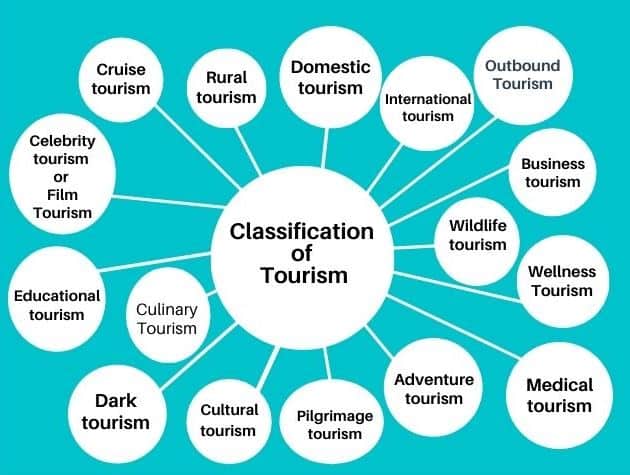“To move, to breathe, to fly, to float: to gain all while you give; to roam the roads of lands remote; to travel is to live.”
-Hans Christian Andersen
The adrenaline rush you get before starting any journey, the plans, the people and the desire to explore and feel free are things that make us travel unknown roads again and again. Travelling is not new to humans.
Early humans, before settling down and realising the great truth of civilisation, lived a nomadic lifestyle. They moved from place to place, exploring landscapes for food and safety. At the time, moving and travelling was definitely not a way of finding liberation and identity but a way to survive.
With time, the need for travelling changed and for quite a very long time this need was almost banished from the lives of people. Humans settled and settled everything they needed as close to them as possible so they did not have to go far to meet their basic needs. But as we know, it’s the inborn character of humans to explore that has made them the most intelligent organism on Earth. Well, this is why they couldn’t stay away from going out to far off places for long!
The First Tourist!
Image Source: https://www.jstor.org/stable/2863158
Now coming to the person who is known as the first tourist– Cyriacus of Ancona. He journeyed in search of the Mediterranean’s classical past in the 15th century. However, he wasn’t really the first traveller!
The first traveller known to the world is Ferdinando Magellano – the first man who set off on a journey around the world and discovered different sea routes so that others can also explore the various lands and seas he has seen. To be very honest, before today I didn’t know that there was any difference between being a traveller and a tourist and I am hoping that there would be many people with the same confusion as mine.
So for those, as I know now, a traveller is someone who wants to see some places and also find new and interesting places that were not there on the map; someone who is willing to walk on the ‘road not taken’. However, a tourist is a person who wants to see all the sights that are there on the map and is there to walk on the familiar paths.
Well, we can say that there is only a fine line between being a traveller and a tourist. And as I assume, now none of us have the time to be a traveller, leaving only tourists around; tourists who become accidental travellers.
Tourism: Then and Now!
Long before, tourism was considered a way to relax, recreate and enjoy. It was considered to be a status symbol in most European countries, any person who did not visit a new place in their lifetime was not respected by society and sometimes ignored. This sounds unrealistic but these kinds of beliefs existed during the 12th to 17th centuries. People didn’t start travelling for leisure but to explore new lands, learn new things, most of the time to receive education, for religious needs and health-related solutions. Indians travelled in ancient times with the main aim of exchanging cultural information. Tourism has been a very important part of life for people for ages, and by the start of the 20th century, it has become a global industry.
Today, tourism is divided into so many types that it even seems difficult to count them all. We all know adventure tourism, business tourism, and cultural tourism but today, there are many more types like culinary tourism, camping, rural tourism, recreational tourism.

Image Source: https://www.theholidaystory.com/different-types-of-tourism/
Another newer tourism type that has emerged over the past few years is accessible tourism. It is a concept that ensures people get access to tourist destinations regardless of physical limitations, disability or age. Genealogy tourism is where people go to their ancestral place to reconnect with their past. Did you know about libel tourism? Libel tourism is when people sue a writer for alleged defamation in a foreign jurisdiction where the libel laws are weak. There is also a concept of sustainable tourism, where people visit a place to have a positive impact on the environment, society and economy.
Then there are some quirky-sounding tourism types like tombstone tourism, war tourism, slum tourism, etc. This may sound pretty absurd but at the end of the day, tourism is way more than leisure.
India is known world-over for its hospitality and is a popular tourist spot for people across the globe. But when it comes to Indians going out for tours, it seems that it is only restricted to the wealthy class. We never had a culture like Europeans that made tourism very necessary.
A majority of tours and travel plans made by the middle-class in India are primarily religious, while the wealthy and upper-middle-class go for recreational tourism. However, scenarios are rapidly changing today with the development of the tourism industry and the availability of more travel and stay options.
The young population of India has started to see tourism as a necessary part of their lives and are very enthusiastic about visiting new places and making their trips affordable. Today, we have a number of options for tourism not only in foreign lands but in our own country. From booking cheap flights to Airbnb’s across the world, the definition of affordable tourism has changed. Another stay option that is fun, attractive and appeals to the youth, in particular, are Zostels in various towns and cities.
Indian tourism has really changed from the time when people travelled to share and spread their knowledge of Vedas and Upanishads to the present time when travellers come to our country in search of all this knowledge. The tourism industry and the need for tourism have changed. The accessibility, along with options, has also increased. Global tourism has become easier with relaxation in rules and regulations.
Medical Tourism

Image Source: https://timesofindia.indiatimes.com/travel/india/travel-guide/india-is-fast-catching-up-with-the-worlds-topmost-medical-tourism-destinations-find-out-why-/gs61183720.cms
When we talk of tourism, we cannot forget Medical Tourism and the boon it has been to humanity. Medical tourism involves travelling to another country or region for seeking medical care. With affordable travel options and lodging, it is very common to see people travelling halfway across the globe to seek good quality, affordable medical care.
There are multiple reasons why people choose to get themselves or their loved ones treated in a foreign country. Some of these include:
- Cheaper treatment costs
- To receive care from physicians who share a similar culture and language as the patient
- If the patient is unable to find the specific treatment or specialist in their home country, they may seek medical care elsewhere
Some of the most common treatments that patients seek on medical tourism trips include surgery, cancer care, cosmetic treatments, fertility treatments, dental care, and organ and tissue transplantations.
COVID-19 and Tourism
In the past one and half years, tourism has taken a backseat as the whole world is grappling with the COVID situation. This is when a new concept of tourism called digital tourism emerged. By definition, digital tourism means using digital tools to organize, manage and even enjoy travel experiences.
Wondering how it actually works? It basically aims at giving the experience and feel of the real tour in digital dimensions through various mind-bending software. Now you don’t need to take vacations, leave work or routine for going on a tour. Although many people find it a great invention, it does not give the complete tourism experience you would get otherwise from going on a real trip. However, it may be a good option for workaholics who can’t leave their work.
Tourism has its own benefits on physical and mental health and this concept of digital tourism is not going to provide those. It’s very important to go out, no one expects you to be a traveller but you can definitely be a tourist, no one expects you to take a long long holiday but you can definitely take a short break and finally, no one expects you to be Cyriacus or Ferdinando but you can definitely find yourself in new places.
The Takeaway!
It may be difficult for us to discover a new place today as most places on Earth have probably been found. Yet, the pleasure of going to a new land is immense; the knowledge and awe are boundless and lastly and the thrill – unforgettable!
Though the world today may be running straight ahead, you can still take a break once in a while, just pack your bags and run astray! Travel the lands that come in your dreams, the world would not stop and neither would it change, but you might grow and can start afresh.









